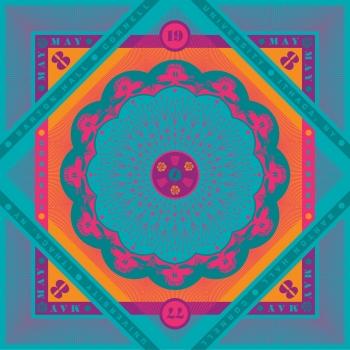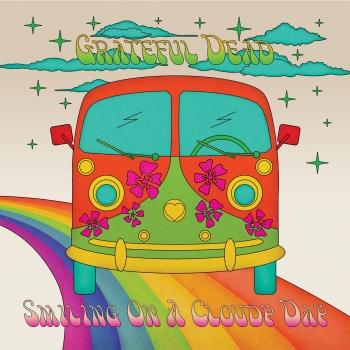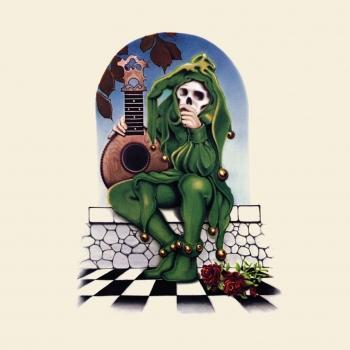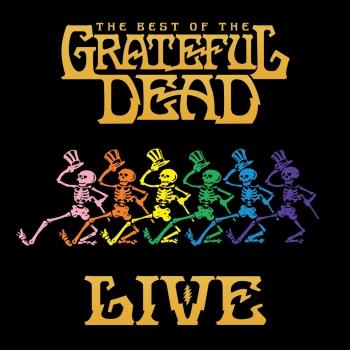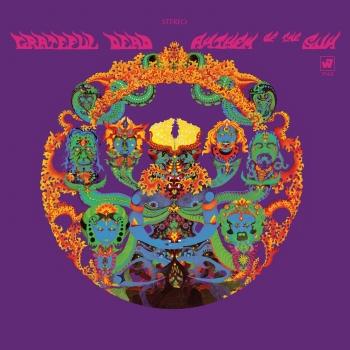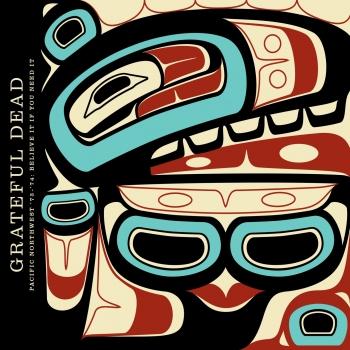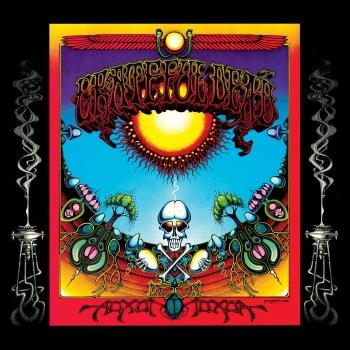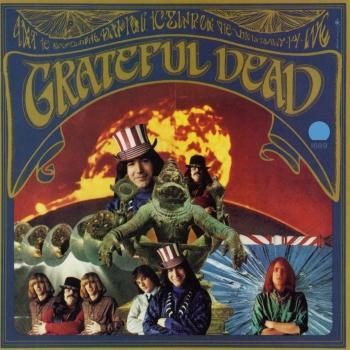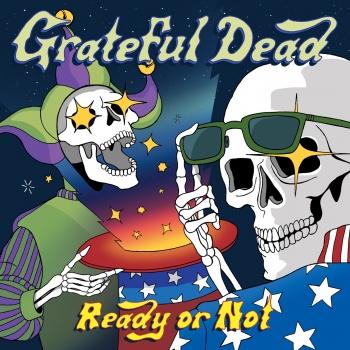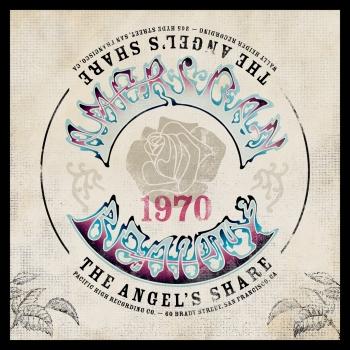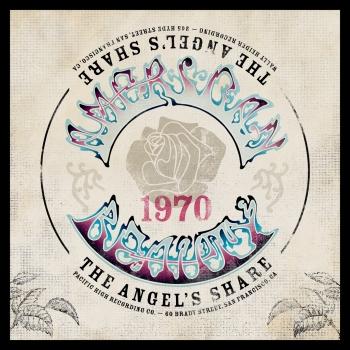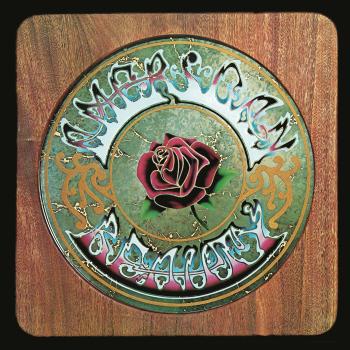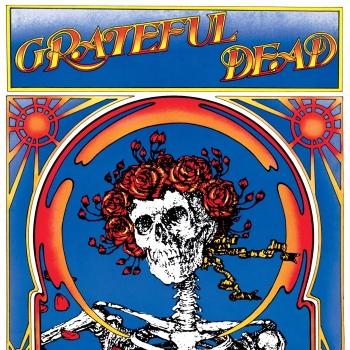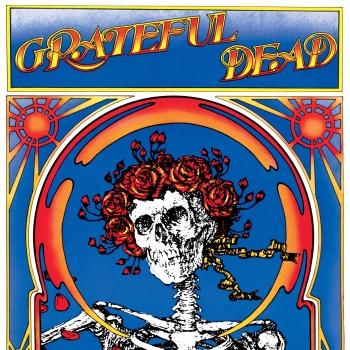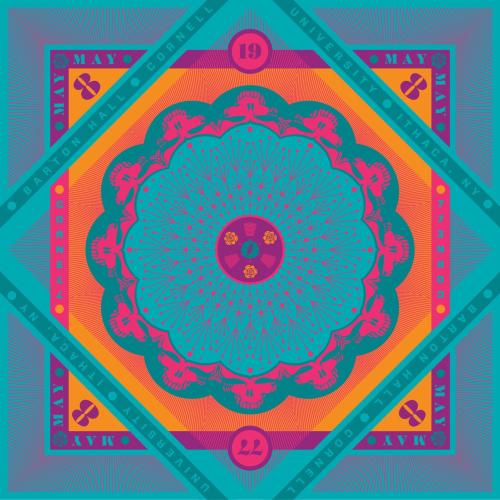
Cornell 5/8/77 Live (Remastered) Grateful Dead
Album info
Album-Release:
2017
HRA-Release:
09.05.2017
Album including Album cover
I`m sorry!
Dear HIGHRESAUDIO Visitor,
due to territorial constraints and also different releases dates in each country you currently can`t purchase this album. We are updating our release dates twice a week. So, please feel free to check from time-to-time, if the album is available for your country.
We suggest, that you bookmark the album and use our Short List function.
Thank you for your understanding and patience.
Yours sincerely, HIGHRESAUDIO
- 1 New Minglewood Blues (Live at Barton Hall, Cornell University, Ithaca, NY 5/8/77) 05:34
- 2 Loser (Live at Barton Hall, Cornell University, Ithaca, NY 5/8/77) 07:58
- 3 El Paso (Live at Barton Hall, Cornell University, Ithaca, NY 5/8/77) 04:50
- 4 They Love Each Other (Live at Barton Hall, Cornell University, Ithaca, NY 5/8/77) 07:29
- 5 Jack Straw (Live at Barton Hall, Cornell University, Ithaca, NY 5/8/77) 06:29
- 6 Deal (Live at Barton Hall, Cornell University, Ithaca, NY 5/8/77) 06:10
- 7 Lazy Lightning (Live at Barton Hall, Cornell University, Ithaca, NY 5/8/77) 03:25
- 8 Supplication (Live at Barton Hall, Cornell University, Ithaca, NY 5/8/77) 04:47
- 9 Brown-Eyed Women (Live at Barton Hall, Cornell University, Ithaca, NY 5/8/77) 05:48
- 10 Mama Tried (Live at Barton Hall, Cornell University, Ithaca, NY 5/8/77) 03:11
- 11 Row Jimmy (Live at Barton Hall, Cornell University, Ithaca, NY 5/8/77) 11:32
- 12 Dancing In The Street (Live at Barton Hall, Cornell University, Ithaca, NY 5/8/77) 16:06
- 13 Scarlet Begonias (Live at Barton Hall, Cornell University, Ithaca, NY 5/8/77) 11:15
- 14 Fire On The Mountain (Live at Barton Hall, Cornell University, Ithaca, NY 5/8/77) 15:40
- 15 Estimated Prophet (Live at Barton Hall, Cornell University, Ithaca, NY 5/8/77) 09:04
- 16 St. Stephen (Live at Barton Hall, Cornell University, Ithaca, NY 5/8/77) 04:43
- 17 Not Fade Away (Live at Barton Hall, Cornell University, Ithaca, NY 5/8/77) 16:20
- 18 St. Stephen II (Live at Barton Hall, Cornell University, Ithaca, NY 5/8/77) 01:54
- 19 Morning Dew (Live at Barton Hall, Cornell University, Ithaca, NY 5/8/77) 14:17
- 20 One More Saturday Night (Live at Barton Hall, Cornell University, Ithaca, NY 5/8/77) 05:10
Info for Cornell 5/8/77 Live (Remastered)
Cornell 5/8/77 was recorded live directly from the soundboards by Betty Cantor-Jackson. After several years the master tapes were seemingly lost for good, but that all changed at the end of 2016. The lost tapes, or lost “Betty boards” as they are commonly known, finally made their way back home to the Grateful Dead vault, making it possible to officially bring the world this legendary show just in time for its 40th Anniversary. The complete live show has been Plangentized by Plangent Processes and remastered by GRAMMY ® award winning sound engineer, Jeffrey Norman.
„Disagreements and debates are common among Grateful Dead fans but there is a surprising consensus that the show the group gave at Barton Hall at Cornell University on May 8, 1977 is one of the band's greatest. It, like so many Dead shows, first gained its reputation through tape trading, but its legend soon eclipsed Deadhead circles, culminating in its induction into the Library of Congress's National Recording Registry in 2012. Rhino/Grateful Dead Records' official release followed in May 2017 -- just in time for the concert's 40th anniversary; it was also bundled as part of a big box called Get Shown the Light, which contains all the shows the Dead did in May 1977 -- and it's worth the wait. Sourced from the original soundboard recordings by Betty Cantor-Jackson, the sound is colorful and vivid, an excellent complement to a prime Dead performance. What makes this such an exceptional performance isn't that it's the Grateful Dead at their most experimental -- not only is there no "Dark Star," there is no "Drums>Space" spotlight -- but at their warmest. From the moment the band launches into "New Minglewood Blues," it's evident they're in a good mood, and they run through a set that draws heavily on party songs and cowboy tunes while finding space for delicate moments, such as a lovely "Morning Dew." If this isn't the best Grateful Dead show ever -- a hard thing to quantify -- it's nevertheless at the sweet spot of providing hardcore Deadheads with plenty to savor while offering a good introduction for neophytes, which is more than enough to make it essential.“ (Stephen Thomas Erlewine)
Jerry Garcia, guitar, vocals
Donna Jean Godchaux, vocals
Keith Godchaux, keyboards
Mickey Hart, drums
Bill Kreutzmann, drums
Phil Lesh, bass
Bob Weir, guitar, vocals
Recorded May 8, 1977 at Barton Hall, Ithaca, New York
Produced by Grateful Dead
Digitally remastered
From the 1960s until the 1995 death of guitarist, singer-songwriter Jerry Garcia, the Grateful Dead played roughly 2,300 long, freeform concerts that touched down on their own country-, blues and folk –tinged songs, and on a similarly wide range of cover versions. Along the way, they popularized the concept of the jam band, influencing thousands of songwriters and basement improvisers and earning themselves maybe the most loyal fans a rock band have ever had.
Nearly as famous as the band itself were its legions of "Deadheads" — predominantly white men who have lovingly preserved the era that spawned the Dead by emulating their Summer of Love predecessors' philosophy and that period's accoutrements: tie-dye clothing, hallucinogenic drugs, and the Dead's music. These fans supported the band with an almost religious fervor, following the group around the country, trading tapes of live concerts (something the band allowed as long as it wasn't for profit, providing prime spots for tapers at shows), and providing a synergy between band and audience that was unique in rock. In true psychedelic style, the Grateful Dead preferred the moment to the artifact — but to keep those moments coming, the Dead evolved into a far-flung and smoothly run corporate enterprise that, for all its hippie trimmings, drew admiring profiles in the financial and mainstream press.
Lead guitarist Jerry Garcia took up guitar at 15, spent nine months in the Army in 1959, then moved to Palo Alto, where he began his long-standing friendship with Robert Hunter, who late became the Dead's lyricist. In 1962 he bought a banjo and began playing in folk and bluegrass bands, and by 1964 he was a member of Mother McCree's Uptown Jug Champions, along with Bob Weir, Ron "Pigpen" McKernan, and longtime associates Bob Matthews (who engineered Dead albums and formed the Alembic Electronics equipment company) and John Dawson (later of New Riders of the Purple Sage).
In 1965 the band became the Warlocks: Garcia, Weir, Pigpen, Bill Kreutzmann, and Phil Lesh, a former electronic-music composer. With electric instruments, the Warlocks debuted in July 1965 and soon became the house band at Ken Kesey's Acid Tests, a series of public LSD parties and multimedia events held before the drug had been outlawed. LSD chemist Owsley Stanley bankrolled the Grateful Dead — a name from an Egyptian prayer that Garcia spotted in a dictionary — and later supervised construction of the band's massive, state-of-the-art sound system. The Dead lived communally at 710 Ashbury Street in San Francisco in 1966–67 and played numerous free concerts; by 1967's Summer of Love, they were regulars at the Avalon and Carousel ballrooms and the Fillmore West. MGM signed the band in 1966, and it made some mediocre recordings. The Dead's legitimate recording career began when Warner Bros. signed the band. While its self-titled 1967 debut album featured zippy three-minute songs, Anthem of the Sun (Number 87, 1968) and Aoxomoxoa (Number 73, 1969) featured extended suites and studio experiments that left the band $100,000 in debt to Warner Bros., mostly for studio time, by the end of the 1960s. Meanwhile, the Dead's reputation had spread, and they appeared at the Monterey Pop Festival in 1967 and Woodstock in 1969.
As the Seventies began, the Dead recouped its Warner debt with three comparatively inexpensive albums — Live/Dead (Number 64, 1969) (recorded in concert at San Francisco's Fillmore West in February and March of 1969), Workingman's Dead (Number 27, 1970), and American Beauty (Number 30, 1970). The former featured extended psychedelic explorations, such as the classic "Dark Star," while in sharp contrast the latter two found the Dead writing concise country-ish songs and working out clear-cut, well-rehearsed arrangements. Workingman's Dead (including "Uncle John's Band" [Number 69, 1970] and "Casey Jones") and American Beauty (including "Truckin'" [Number 64, 1971], "Ripple," and "Box of Rain") received considerable FM radio airplay, sold respectably, and provided much of the Dead's concert repertoire.
With a nationwide following, the Dead expanded its touring schedule and started various solo and side projects (aside from the band members' own works, many Dead members also appeared on the half-dozen-plus albums Dead lyricist Robert Hunter began releasing in 1973). The group worked its way up to a 23-ton sound system and a large traveling entourage of road crew, family, friends, and hangers-on — most of whom would later become staff employees complete with health-insurance and other benefits, as the Dead evolved into an efficient and highly profitable corporation. The Dead finished out its Warners contract with a string of live albums including 1971's Grateful Dead, a.k.a. "Skull and Roses" (Number 25), which introduced more concert staples such as "Bertha" and "Wharf Rat." In 1973 the Dead played for over half a million people in Watkins Glen, New York, on a bill with the Band and the Allman Brothers. By then the group had formed its own Grateful Dead Records and a subsidiary, Round, for non-band efforts.
Read more: http://www.rollingstone.com/music/artists/the-grateful-dead/biography
This album contains no booklet.










